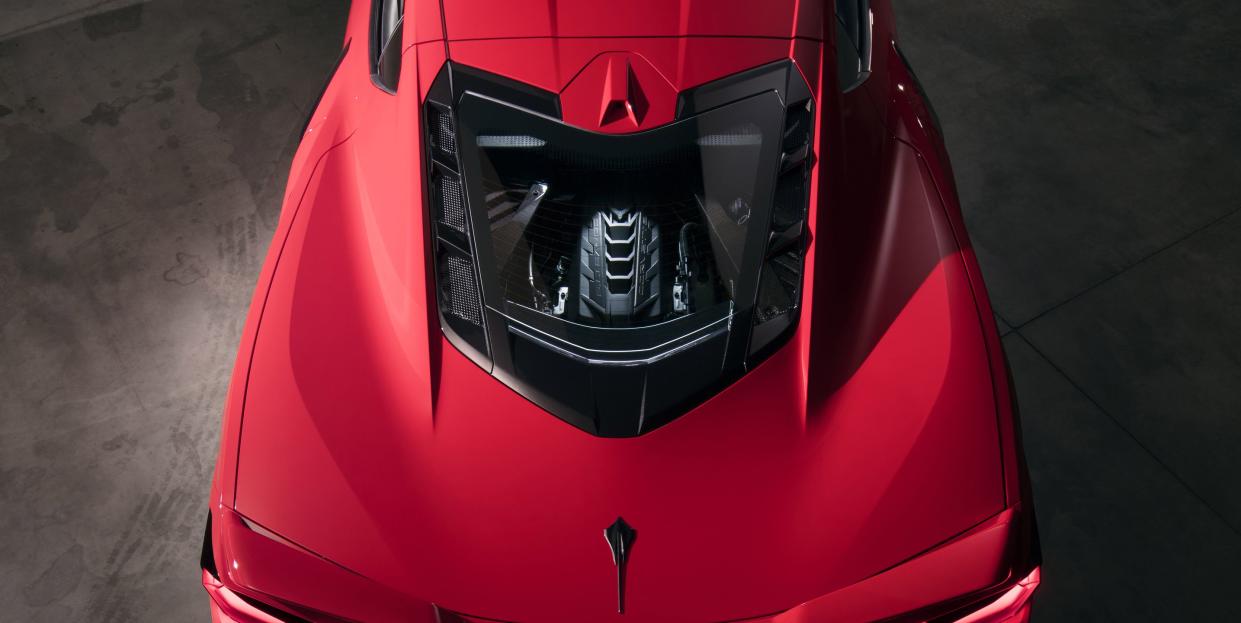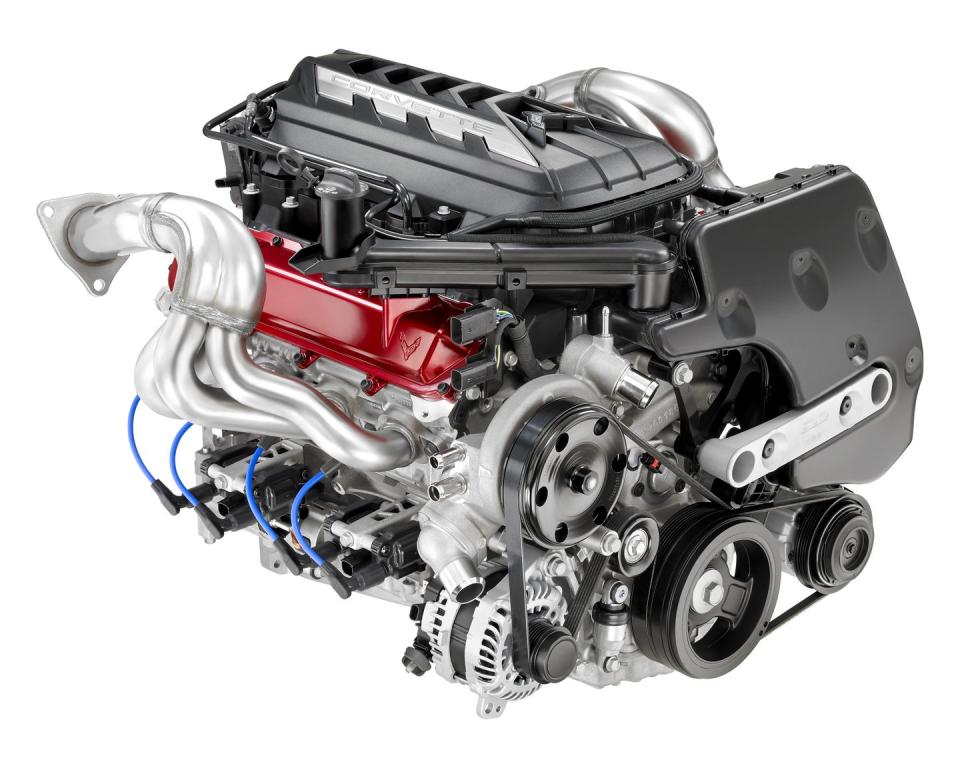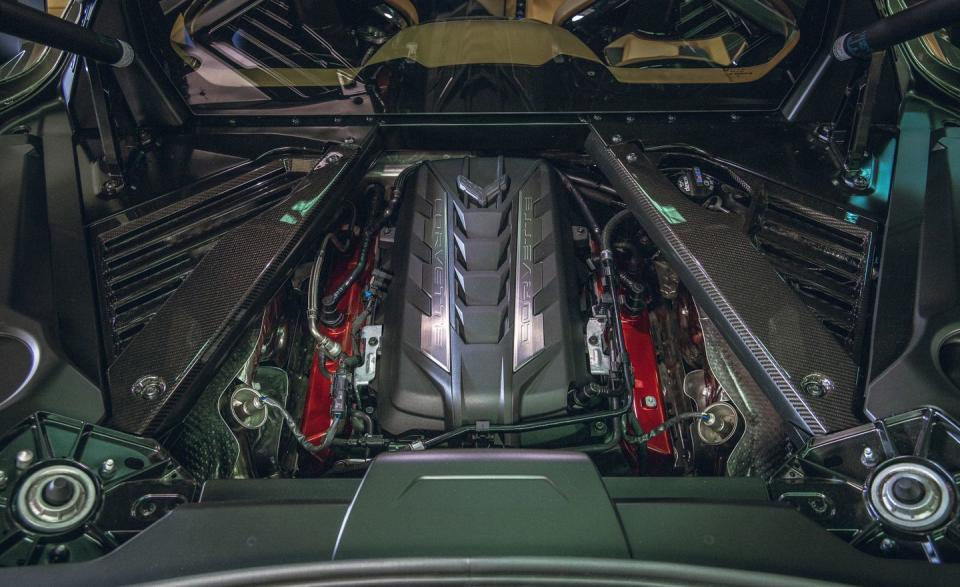What You Need to Know about the C8 Corvette's LT2 V-8 Engine

The C8 Corvette Stingray is powered by a new version of GM's 6.2-liter "small block" V-8, dubbed LT2.
With up to 495 horsepower and 470 lb-ft of torque, the new Corvette produces more power and torque than the previous C7's LT1 V-8 engine.
The only transmission that pairs with this engine is an eight-speed dual-clutch automatic transmission; no manual will be available.
Chevy’s small-block V-8 has been a part of the Corvette legacy since 1955. It continues in the C8 as the LT2, making more power and more torque (495 horsepower and 470 pound feet with the performance exhaust) than the LT1 in the outgoing car. The LT2 expands the small-block’s capabilities with more-efficient intake and exhaust manifolds, a more-robust lubrication system, and a new camshaft. It uses the same bore and stroke, as well as the same forged crankshaft, rods, and 11.5:1-compression-ratio pistons, as the LT1 upon which it’s based.

All Stingrays will now get a dry-sump system to accommodate the chassis’s increased track capability, which includes sustained lateral acceleration beyond 1.00 g. Previously, dry-sump lubrication was only available as part of the C7 Stingray’s Z51 package. The system goes from one pump to three multistage scavenge pumps—one in the valley of the V and two in the crankcase. The oil reservoir is now mounted to the engine rather than being bolted into the engine bay separately as it was on the C7. A larger liquid-to-liquid oil cooler is capable of 25 percent more thermal rejection.
The camshaft’s intake lobes remain the same as the LT1’s, but lift on the exhaust lobes is slightly increased. The LT2’s cam phasing, which alters intake and exhaust timing together, is about the same as before. The rest of the valvetrain is carryover from LT1 as is the LT2’s rev limiter, which remains at 6600 rpm.

With the engine behind the driver, engineers were less concerned with forward sightlines and free to make the LT2 taller than the LT1. A new intake manifold with equal-length runners is mounted so that the engine now breathes from the back of the car, further shortening the distance between the throttle body and intake valves, which improves flow.
New stainless-steel exhaust manifolds also use equal-length runners, which collect using a race-car-like four-into-one design. The LT1’s cast manifolds had an intermediate step, going from four into two into one in the C7. An active exhaust changes the LT2’s sound in different drive modes, but isn’t a factor in peak output.
('You Might Also Like',)

